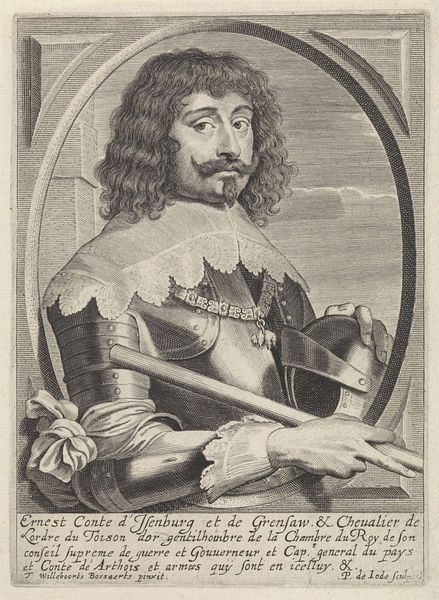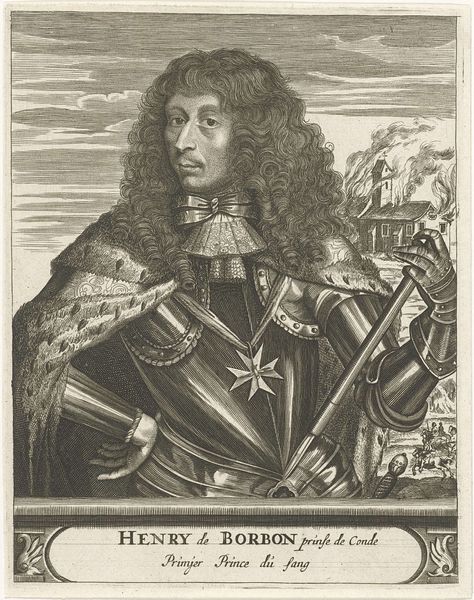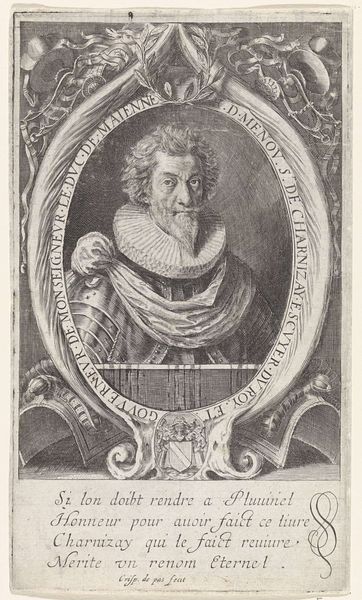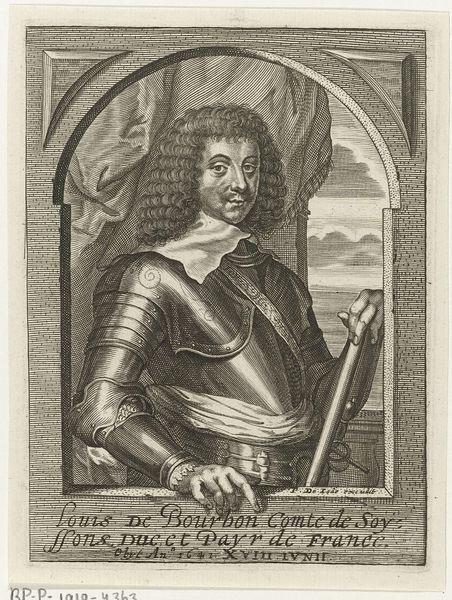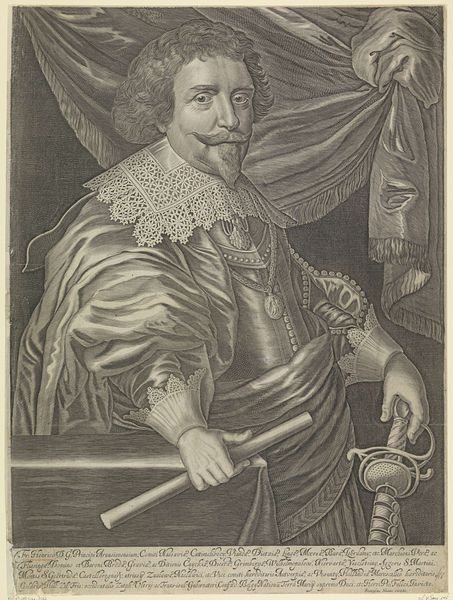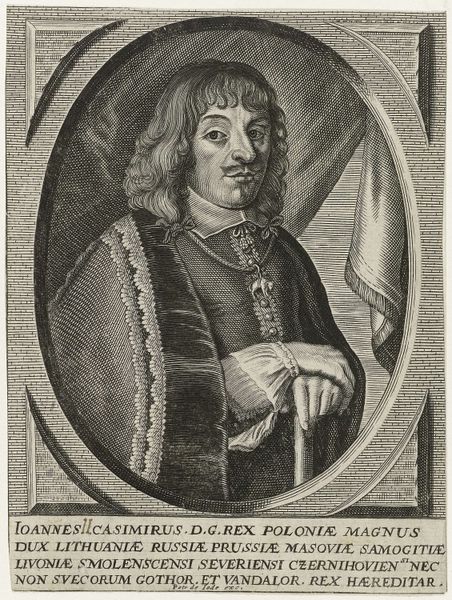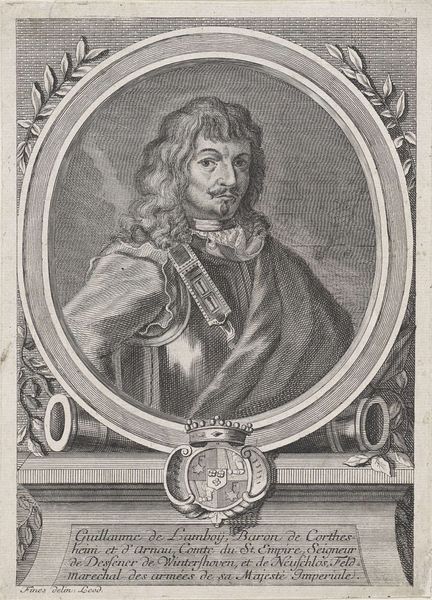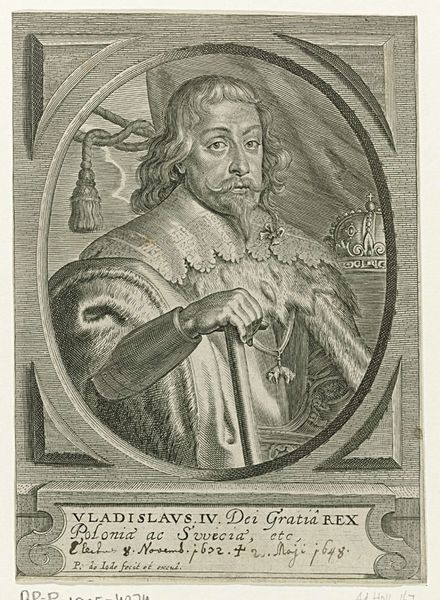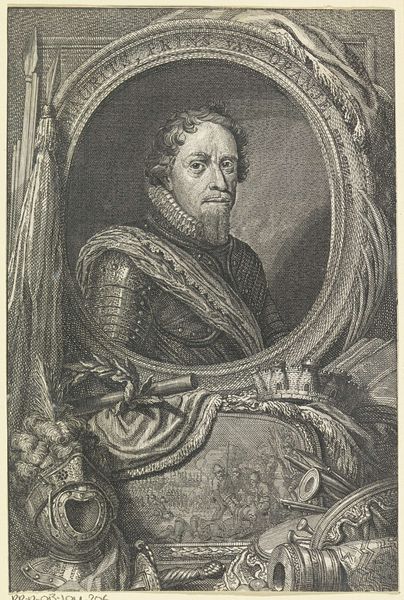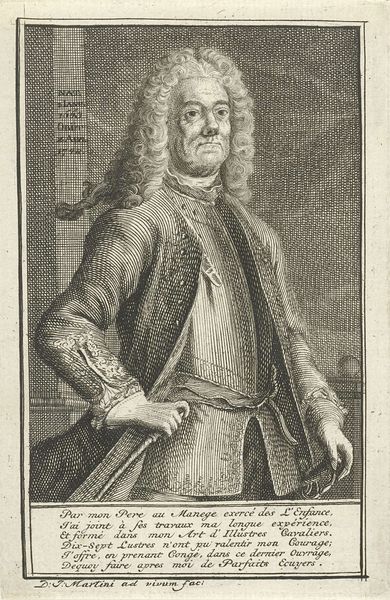
print, engraving
#
portrait
#
baroque
#
dutch-golden-age
# print
#
figuration
#
line
#
history-painting
#
engraving
Dimensions: height 253 mm, width 160 mm
Copyright: Rijks Museum: Open Domain
Curator: This is a print from 1674, a portrait of Johan, Vrijheer van Paffenrode, created by Jan van Haensbergen. The work is a beautiful example of the engraving style that was popular in the Dutch Golden Age. Editor: My first impression is how intensely detailed the lines are, creating texture upon texture. It gives the overall image a tactile quality, as if you could feel the roughness of his armor, the plushness of his sash. Curator: Indeed. What stands out to me is how it reflects the era’s emphasis on portraying status and power. The armor, the commanding gaze, the inscription below detailing his titles – all elements constructing a powerful visual narrative. It's interesting to note how portraiture was used as a tool for cementing social hierarchies. Editor: And the material itself, the engraving—it’s inherently reproductive, right? This wasn't a unique object accessible only to the elite, but potentially widely disseminated. How does that shift the meaning or impact? Was it propaganda, advertisement, or something else? The very process becomes part of the story of Johan van Paffenrode. Curator: Precisely. Engravings allowed for broader circulation of images, and that played a vital role in shaping public perception of influential figures like Johan. By examining its creation and dissemination, we start seeing not only an individual likeness but also a product embedded within socio-political currents of the time. This reveals layers about how power was negotiated, displayed, and understood by different levels of society. Editor: You’re reminding me how the choice of medium fundamentally changes the availability of images and impacts the artwork’s audience. I wonder about the engraver’s skill here and how the line work builds value as an object to be consumed and appreciated, and of course, how this impacts the perception of van Paffenrode as someone who is a worthy subject of this detailed creation. Curator: A compelling point. And to connect with the earlier statement on tactility, it really emphasizes how the engraving functions as both art object and public representation of van Paffenrode in Dutch society. The material construction and production become a key way of promoting an image that bolsters established power structures. Editor: So, thinking about process helps expose the intricate connections between the art, society, and historical record, revealing stories well beyond van Haensbergen’s intent, or that of van Paffenrode. Curator: Exactly. It really enriches our understanding when considering how materials and production processes play a role.
Comments
No comments
Be the first to comment and join the conversation on the ultimate creative platform.

